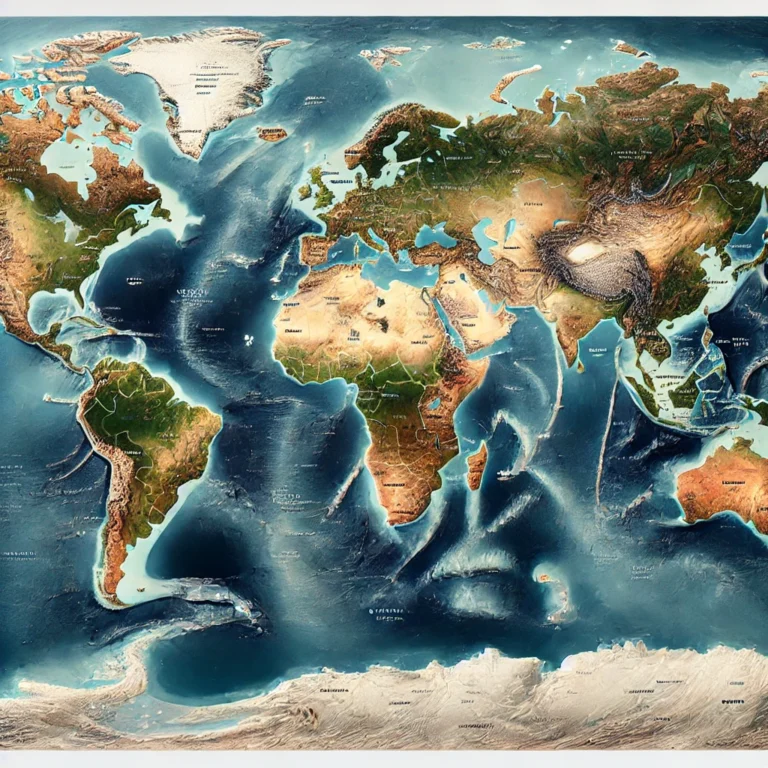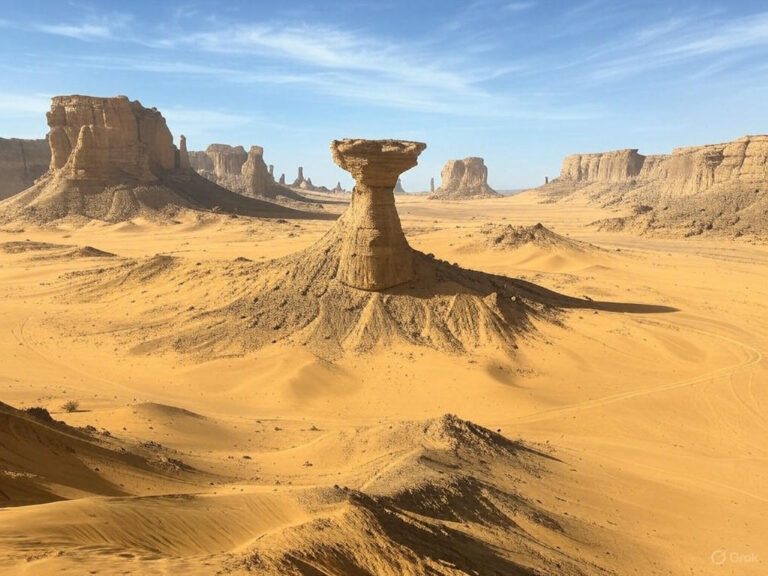Major Rivers of Africa
We’ll now study Major Rivers—not only geographical entities but lifelines of civilizations, storehouses of hydro-political power, and deeply embedded in Africa’s ecological and cultural tapestry.

Nile River – The Lifeline of Northeast Africa
📏 Length: ~6,600 km
It is the longest river in the world, although there’s an ongoing debate with the Amazon depending on how we measure their sources.

🌐 Flow Direction:
🔁 South to North — a rare direction globally.
Other major rivers with similar flow include:
- Lena, Ob, and Yenisey in Russia.
🗺️ Path: From Lake Victoria to the Mediterranean Sea
Its delta in Egypt forms an arcuate shape (like a fan or triangle) — a classical delta form.
🧭 Source and Mouth
- Source: Technically, the confluence of White Nile and Blue Nile at Khartoum, Sudan.
- Mouth: Nile Delta, flowing into the Mediterranean Sea (Egypt).
🌊 Drainage Basin Countries
The Nile’s basin spans 11 countries:
Tanzania, Uganda, Rwanda, Burundi, DRC, Kenya, Ethiopia, Eritrea, South Sudan, Sudan, and Egypt. Try to locate these countries on the Nile River map below. It will be a good mapping exercise.
🧩 Main Tributaries
- White Nile
- Blue Nile
- Atbarah
🏙️ Major Cities Along the Nile
- Khartoum (confluence point)
- Atbara (joins from Ethiopia)
- Cairo (capital of Egypt)
💧 Key Reservoir:
- Lake Nasser (man-made, behind the Aswan High Dam)
🌊 White Nile – The Primary Stream of the Nile
Think of the White Nile as the “trunk” from which the rest of the Nile flows.
📍 Source: Lake Victoria, Uganda
(But its ultimate headwater is traced to Kagera River, which starts in Burundi)
📍 Mouth: Joins the Blue Nile at Khartoum
🧭 Countries in the Drainage Basin:
DRC, Rwanda, South Sudan, Sudan, Tanzania, Uganda
🧩 Main Tributaries:
- Albert Nile
- Bahr el Ghazal
- Sobar River
🏙️ Important Cities:
- Jinja (Uganda) – Near the mouth of Lake Victoria
- Juba (South Sudan)
- Khartoum (Sudan)
💧 Notable Reservoir:
- Lake No (in South Sudan) – where Bahr al-Jabal joins Bahr el Ghazal to officially form the White Nile.
📌 Kagera River – The “Real” Source of the Nile?
- Rises near the northern tip of Lake Tanganyika, in Burundi
- Flows into Lake Victoria
- Thus, sometimes considered the ultimate source of the Nile
🗺️ White Nile Sub-stretches (by name):
| Stretch | Name |
|---|---|
| Lake Victoria → Lake Albert | Victoria Nile |
| Lake Albert → South Sudan border | Albert Nile |
| South Sudan border → Lake No | Mountain Nile or Bahr al-Jabal |
🌊 Blue Nile – The Mightiest Tributary
Though shorter, the Blue Nile contributes ~60% of the Nile’s total water, especially during flood seasons.
📍 Source: Lake Tana, Ethiopia
📍 Mouth: Confluence with White Nile at Khartoum
🌍 Countries in the Basin: Ethiopia and Sudan
🧩 Tributaries:
- Dinder River
- Rahad River
🏙️ Important Cities:
- Al-Damazin, Wad Madani (Sudan)
💧 Important Dam:
- Sennar Dam (Sudan)
🏞️ Atbarah River – The Last Tributary of the Nile
- Origin: Northwest Ethiopia, ~50 km north of Lake Tana
- Joins Nile at Atbara town, Sudan
📌 Often dry outside the rainy season — ephemeral river.
🧱 Aswan High Dam and Lake Nasser
- Built in Egypt (1960–1970) across the Nile
- Multi-purpose project: Irrigation, flood control, hydroelectric power
- Creates Lake Nasser, a vast artificial reservoir
- Essential to Egypt’s water security, agriculture, and economy
🚧 Grand Ethiopian Renaissance Dam (GERD)
The GERD is to Ethiopia what the Aswan Dam is to Egypt — a monument of development, and a flashpoint of geopolitics.
📍 Location: On the Blue Nile, Ethiopia
- Africa’s largest dam
- Built to produce hydroelectricity, not irrigation
⚖️ Key Features:
- Gravity Dam
- Large storage capacity but small surface area – hence, less evaporation
- Capacity is twice that of Lake Mead (USA’s largest reservoir)
- Aswan Dam’s capacity is four times greater than Lake Mead
⚠️ Geopolitical Conflict
Egypt’s Perspective:
- 66% of Nile water used by Egypt historically
- Feels threatened by Ethiopia’s control over the Blue Nile
- Fears impact on agriculture, food security, and livelihoods
Sudan’s Position:
- Concerned, but also potentially benefits from:
- Power generation
- Reduced flooding
- Advocates joint management
Ethiopia’s Stand:
- GERD is essential for energy needs and exports
- Opposes international intervention, prefers African Union mediation
🏛️ Recent Developments:
- Egypt and Sudan raised the issue at the UN Security Council
- Ethiopia maintains African solutions to African problems
🌊 Congo River – The Pulse of Central Africa

📏 Length: ~4,700 km
- Second longest river in Africa
- Only river in the world to cross the Equator twice!
📍 Source: Highlands of Zambia (between Lake Tanganyika and Lake Malawi)
📍 Mouth: Atlantic Ocean at Banane, DRC
🌍 Drainage Basin Countries:
- DRC, Republic of the Congo, Central African Republic, Cameroon, Zambia, Angola, Tanzania
🧩 Main Tributaries:
- Ubangi River
- Sangha River
- Kasai River
🏙️ Major Cities on Its Banks:
- Kinshasa (Capital of DRC) – left bank
- Brazzaville (Capital of Republic of Congo) – right bank
These are the two closest capital cities in the world, divided only by the Congo River!
💧 Significance of Congo River:
- 2nd highest annual mean freshwater discharge globally (after Amazon)
- 2nd-largest exporter of terrestrial organic carbon to oceans
🌳 Ecological Role – Congo Basin:
- Encloses the world’s second-largest rainforest (after Amazon)
- Known as the “lungs of Africa”
- The Congo Plume (in the Atlantic Ocean) acts as a major carbon sink – balancing global carbon cycles
🏞️ Niger River – The Crescent of West Africa

📏 Length: ~4,200 km
- 3rd longest river in Africa (after Nile and Congo)
- Forms a boomerang-shaped or crescent arc — a rare pattern in fluvial geography
🌐 Flow:
- Starts in Guinea (near the Atlantic) but first flows northeast, deep into the Sahara, and then bends southeast into the Gulf of Guinea — a strange flow pattern explained by ancient tectonics and river capture.
🧭 Source:
- Guinea Highlands, Southeastern Guinea
🧭 Mouth:
- Gulf of Guinea, forming Africa’s largest delta — the Niger Delta in Nigeria
Known for its petroleum reserves, but also infamous for oil spills and conflicts
🌍 Drainage Basin
- Traverses 4 countries directly
- 9 basin countries:
🇧🇯 Benin, 🇧🇫 Burkina Faso, 🇨🇲 Cameroon, 🇹🇩 Chad, 🇨🇮 Ivory Coast, 🇬🇳 Guinea, 🇲🇱 Mali, 🇳🇪 Niger, 🇳🇬 Nigeria. Try to locate these countries on the Niger River Map. You will not find one country in the map 😉.
🧩 Main Tributaries:
- Milo, Mofu, Bani (in Mali)
- Kaduna, Benue (in Nigeria)
🔁 Benue River is the most important right-bank tributary (joins at Lokoja, Nigeria)
🏙️ Important Cities:
- Bamako (capital of Mali)
- Mopti (central river port city of Mali)
💧 Major Dam:
- Kainji Dam (Nigeria) – multipurpose: electricity, irrigation, flood control
🏞️ Zambezi River

📏 Length: ~2,574 km
- 4th longest river in Africa
- Longest east-flowing river of the continent
- Southern Africa’s longest transboundary river
📍 Source: Kalene Hills, Northwestern Zambia
📍 Mouth: Mozambique Channel, Indian Ocean
🌍 Drainage Basin Countries:
8 nations:
🇦🇴 Angola, 🇧🇼 Botswana, 🇲🇼 Malawi, 🇲🇿 Mozambique, 🇳🇦 Namibia, 🇹🇿 Tanzania, 🇿🇲 Zambia, 🇿🇼 Zimbabwe
🧩 Hydrological Significance:
- Seasonal river — high flow during wet season
- Known for hydropower and waterfalls
🌊 Major Attractions:
- Victoria Falls – one of the largest waterfalls in the world (between Zambia & Zimbabwe)
- It is considered one of the world’s largest waterfalls due to its width of 1,708 meters. It is a UNESCO World Heritage Site.
Native name: Mosi-oa-Tunya (“The Smoke that Thunders”)
🏙️ Important Cities:
- Lusaka (Zambia’s capital – not on the river but in its basin)
- Tete (Mozambique – major river port)
💧 Important Dams/Reservoirs:
- Kariba Dam (Zambia–Zimbabwe) – forms Lake Kariba, world’s largest reservoir by volume
- Cahora Bassa Dam (Mozambique) – crucial for regional power supply
🏞️ Orange River – The Lifeline of Arid South Africa

📏 Length: ~2,200 km
- Longest river entirely within South Africa
📍 Source: Drakensberg Mountains, Lesotho
(As the Senqu River in its upper course)
📍 Mouth: Atlantic Ocean near Alexander Bay, South Africa
🌍 Drainage Basin Countries:
🇿🇦 South Africa, 🇳🇦 Namibia, 🇧🇼 Botswana, 🇱🇸 Lesotho
🌊 Geographical Significance:
- Crucial for irrigation in semi-arid and desert regions
- Forms a natural border between South Africa and Namibia
🏙️ Important Cities:
- Upington (South Africa)
- Noordoewer (Namibia)
💧 Key Features:
- Known for the Orange River Project – irrigation, canals, and hydropower schemes
- Used for grape cultivation and wine production in the arid Namaqualand region
✅ Summary Table: Major African Rivers
| River | Length (km) | Source | Mouth | Major Countries | Key Dams / Features |
|---|---|---|---|---|---|
| Nile | ~6,600 | Lake Victoria (White Nile) | Mediterranean Sea | Uganda, Sudan, Egypt | Aswan Dam, GERD |
| Congo | ~4,700 | Highlands of Zambia | Atlantic Ocean | DRC, Congo, Angola | Equator-crossing river, Congo Plume |
| Niger | ~4,200 | Guinea Highlands | Gulf of Guinea | Nigeria, Mali, Guinea | Kainji Dam, Niger Delta |
| Zambezi | ~2,574 | Kalene Hills, Zambia | Mozambique Channel | Zambia, Mozambique | Kariba Dam, Cahora Bassa, Victoria Falls |
| Orange | ~2,200 | Drakensberg, Lesotho | Atlantic Ocean | South Africa, Namibia | Irrigation project, borders Namibia |
🔚 Concluding Thought
These rivers are not just geographical features but symbols of life, culture, conflict, and cooperation in Africa. Understanding them is key not only for geography but also for international relations, environmental policy, and sustainable development.




One Comment